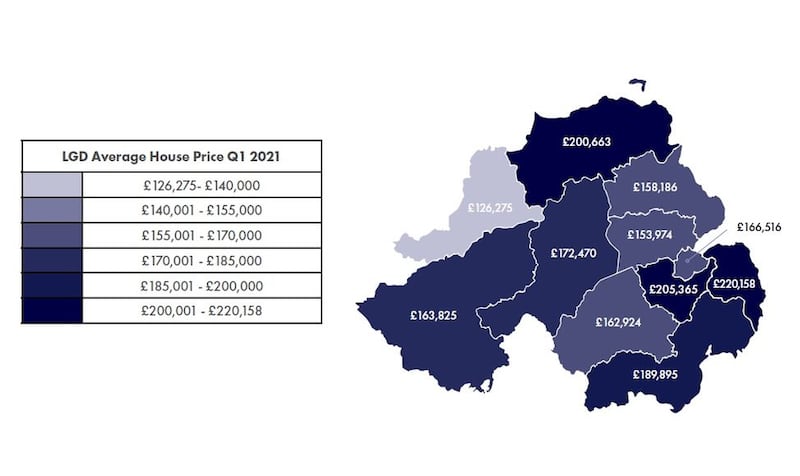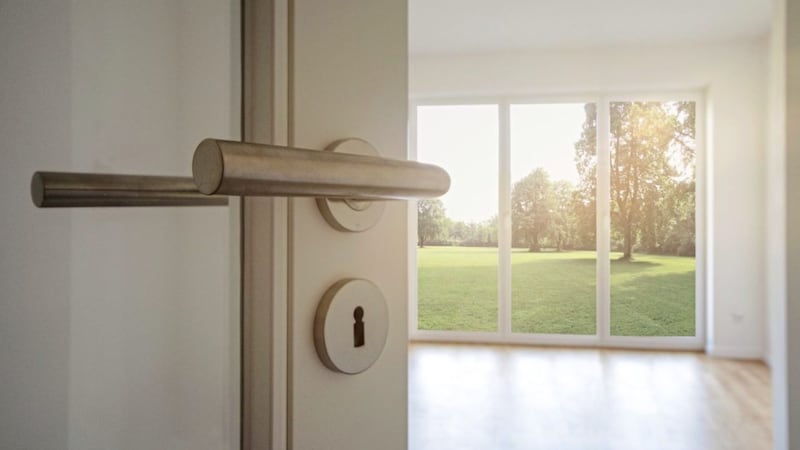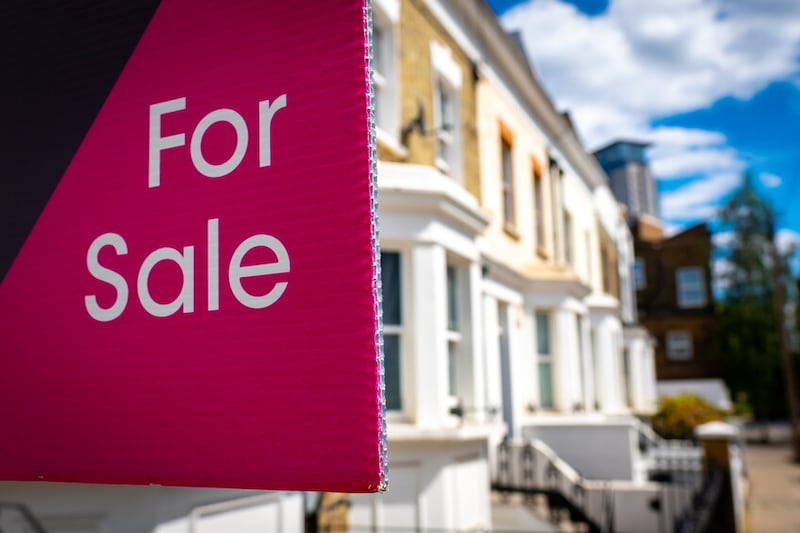THE average price of a detached house in Northern Ireland rocketed by 13.5 per cent in a year amidst a post-lockdown ‘race for space’, according to the latest research from Ulster University (UU).
The Northern Ireland Quarterly House Price Index put the average price of the home during the first quarter (Q1) of 2021 at £189,853, a three per cent increase in final quarter of 2020 and 6.9 per cent up on Q1 2020.
But the increase was significantly higher in the case of detached homes (+13.5 per cent), with semi-detached prices also rising 7.9 per cent year-on-year.
The report, produced by UU university along with the Northern Ireland Housing Executive and Progressive Building Society said the average house price is at its highest since the autumn of 2008.
Although based on just a sample of sales, the authors said the 2,829 transactions tracked in the report was the highest for at least a decade.
Dr Michael McCord of Ulster University said the activity within the housing market continued to grow throughout the first quarter, with no obvious signs of the competition between buyers diminishing in the second quarter.
The pent-up demand created as a result of the lockdown restrictions has played a part in the surge in demand for houses. Other key factors include the temporary stamp duty holiday, increased savings and a new UK Government guarantee scheme to encourage lenders to offer mortgages with just a five per cent deposit.
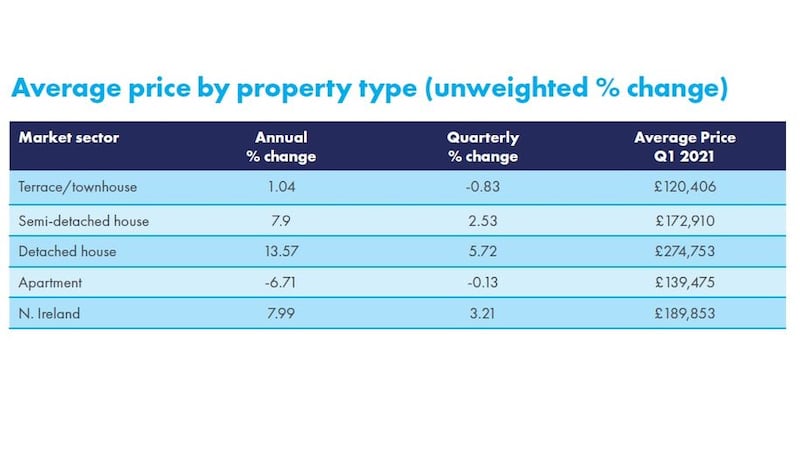
The report’s authors said its data pointed to higher activity among first time buyers, with strong evidence of home-owners trading up within the market.
They also found that prices in some areas had been accelerated by an influx of buyers from Britain, “many of whom spurred by the relocation potential that remote working presents”.
Estate agents also reported an increasing demand for property in more rural locations.
The index showed average house prices in Ards and North Down increased by 8.3 per cent to £220,158 over the course of a single quarter, lifting it above Lisburn and Castlereagh (£205,365) as the most expensive district in the north to buy a house in.
Prices also rose five per cent in Newry, Mourne and Down over the quarter.
“The impact of the Covid-19 pandemic on the housing market has resulted in some notable trends,” said Dr McCord. “Particularly in terms of market psychology as buyers and sellers alike have evaluated their housing options and lifestyle choices.”
But the trend was not universal, with prices actually falling in the Mid and East Antrim; Fermanagh and Omagh; Derry and Strabane; Antrim and Newtownabbey; and Causeway Coast and Glens districts between Q4 2020 and Q1 2021.
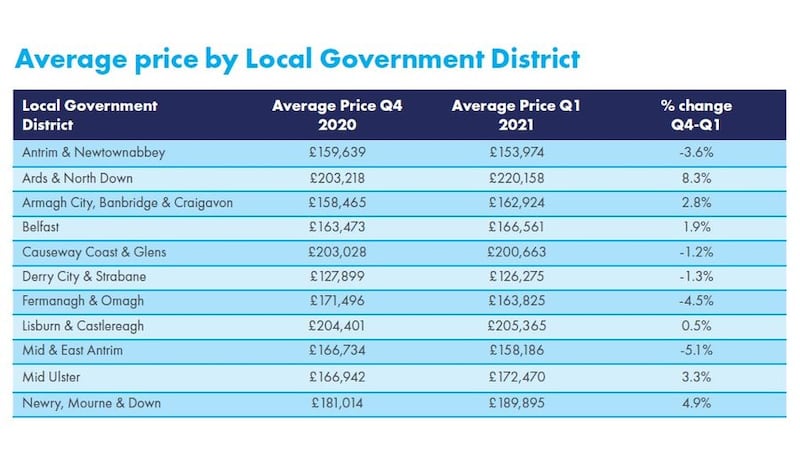
The UU report follows official data from HMRC showing March 2021 as the busiest month for the north’s housing market since the height of the 2007 property boom.
HMRC said a total of 3,540 residential property transactions were recorded here during the month.
Elma Newberry of the Housing Executive said: “Relocation decisions by existing owners – to a larger home or a different area – seem to be a key driver of both the demand and the level of annual price growth, which partly reflects the current structure of the market.
“However, the situation for those younger households and prospective first time buyers whose financial position has been impacted by the events of the last year is likely to be more challenging.”
